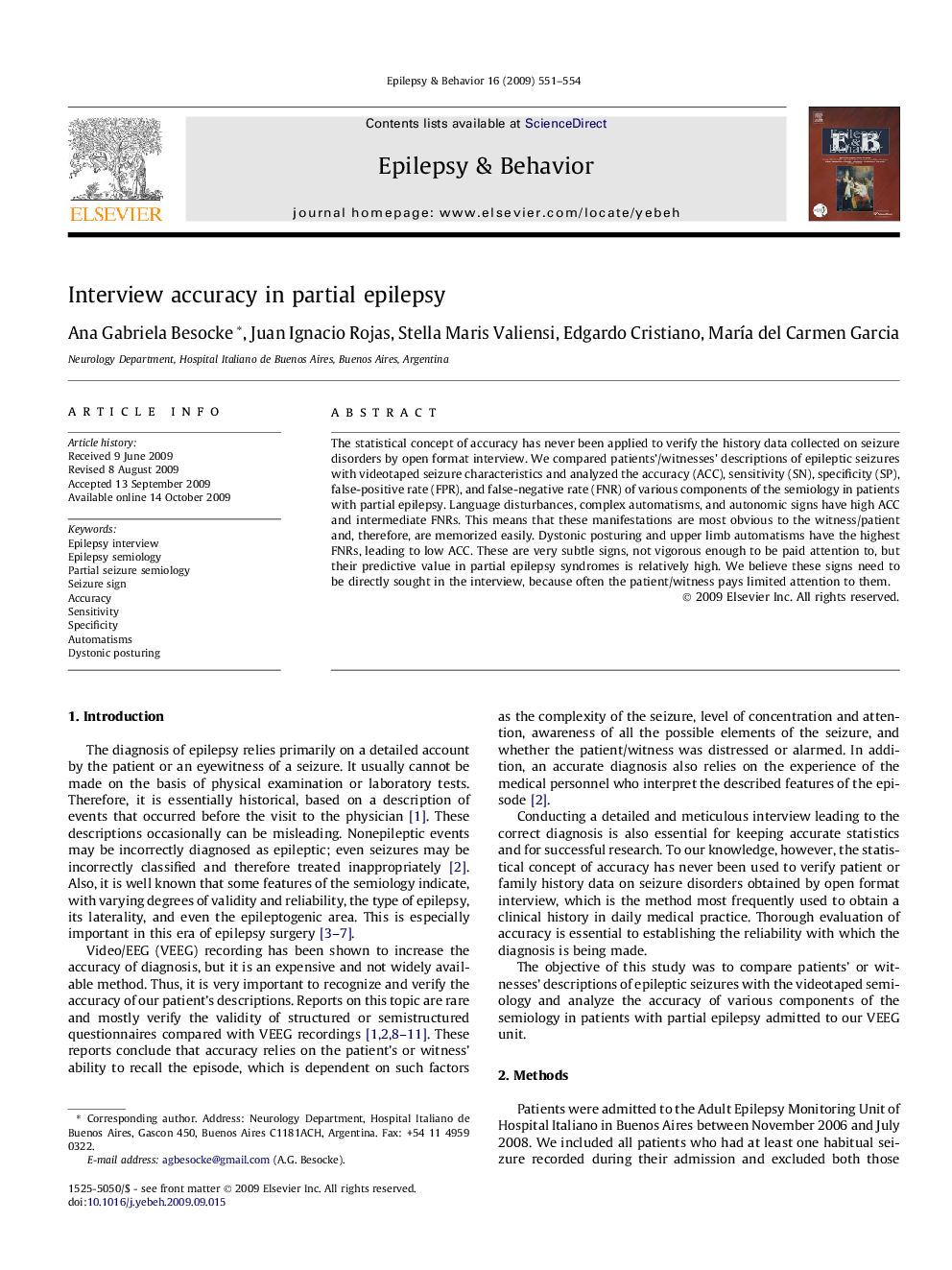| Article ID | Journal | Published Year | Pages | File Type |
|---|---|---|---|---|
| 3050543 | Epilepsy & Behavior | 2009 | 4 Pages |
The statistical concept of accuracy has never been applied to verify the history data collected on seizure disorders by open format interview. We compared patients’/witnesses’ descriptions of epileptic seizures with videotaped seizure characteristics and analyzed the accuracy (ACC), sensitivity (SN), specificity (SP), false-positive rate (FPR), and false-negative rate (FNR) of various components of the semiology in patients with partial epilepsy. Language disturbances, complex automatisms, and autonomic signs have high ACC and intermediate FNRs. This means that these manifestations are most obvious to the witness/patient and, therefore, are memorized easily. Dystonic posturing and upper limb automatisms have the highest FNRs, leading to low ACC. These are very subtle signs, not vigorous enough to be paid attention to, but their predictive value in partial epilepsy syndromes is relatively high. We believe these signs need to be directly sought in the interview, because often the patient/witness pays limited attention to them.
